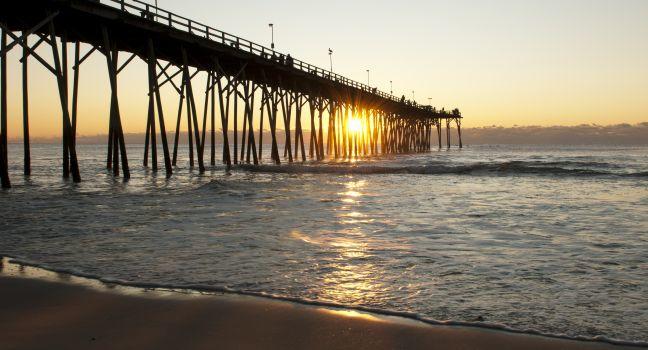Battleship North Carolina
Across the Cape Fear River from downtown, take a self-guided tour of a ship that participated in every major naval offensive in the Pacific during World War II. Exploring the floating city, with living quarters, a post office, chapel, laundry, and even an ice cream shop, takes about two hours. A climb down into the ship's interior is not for the claustrophobic. A ½-mile timber walkway lets visitors tour the ship's exterior with no cost of admission. The ship, which is open for tours every day of the year, can be reached by car or via river taxi from the downtown waterfront.




